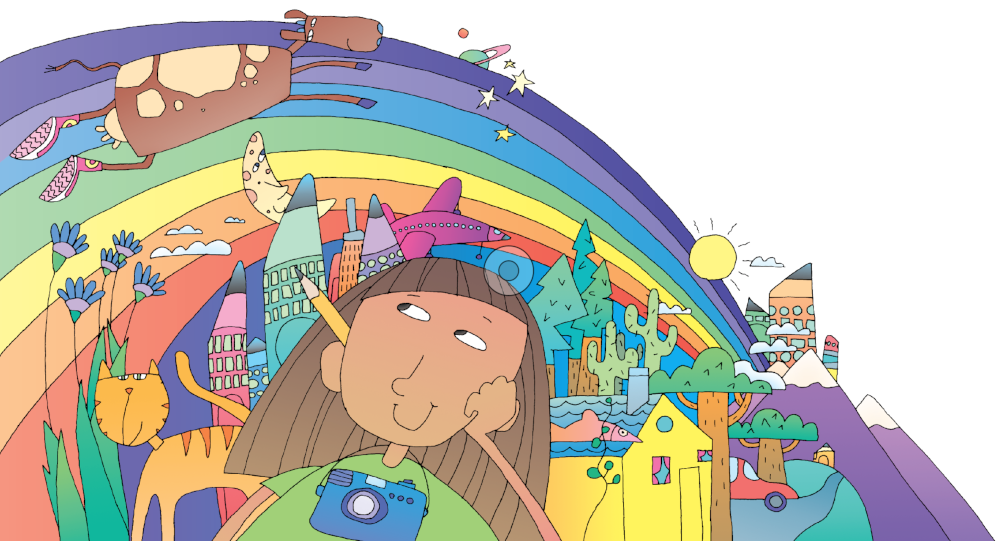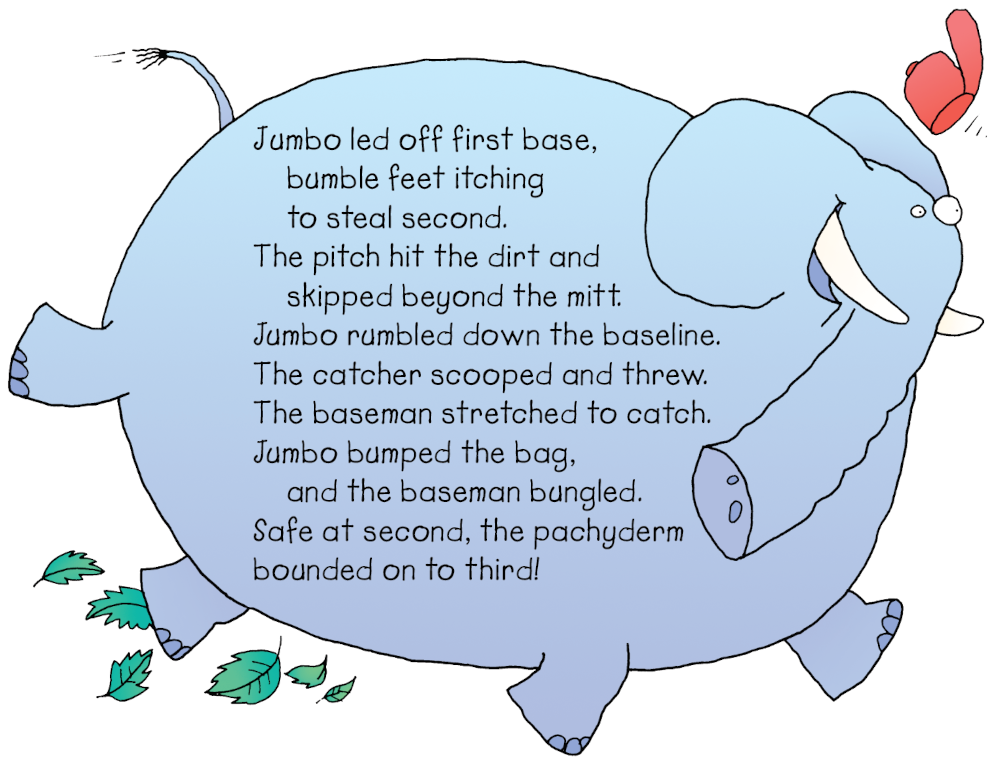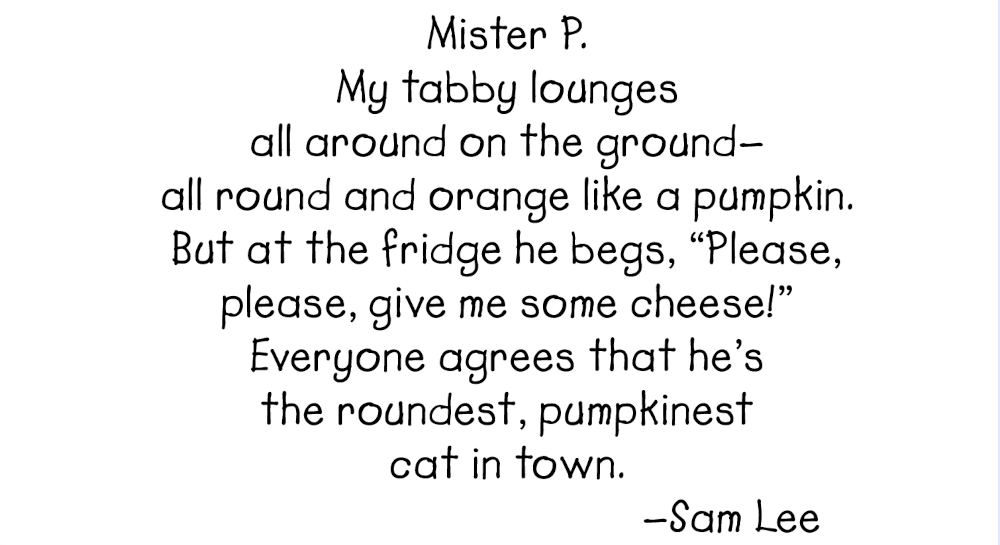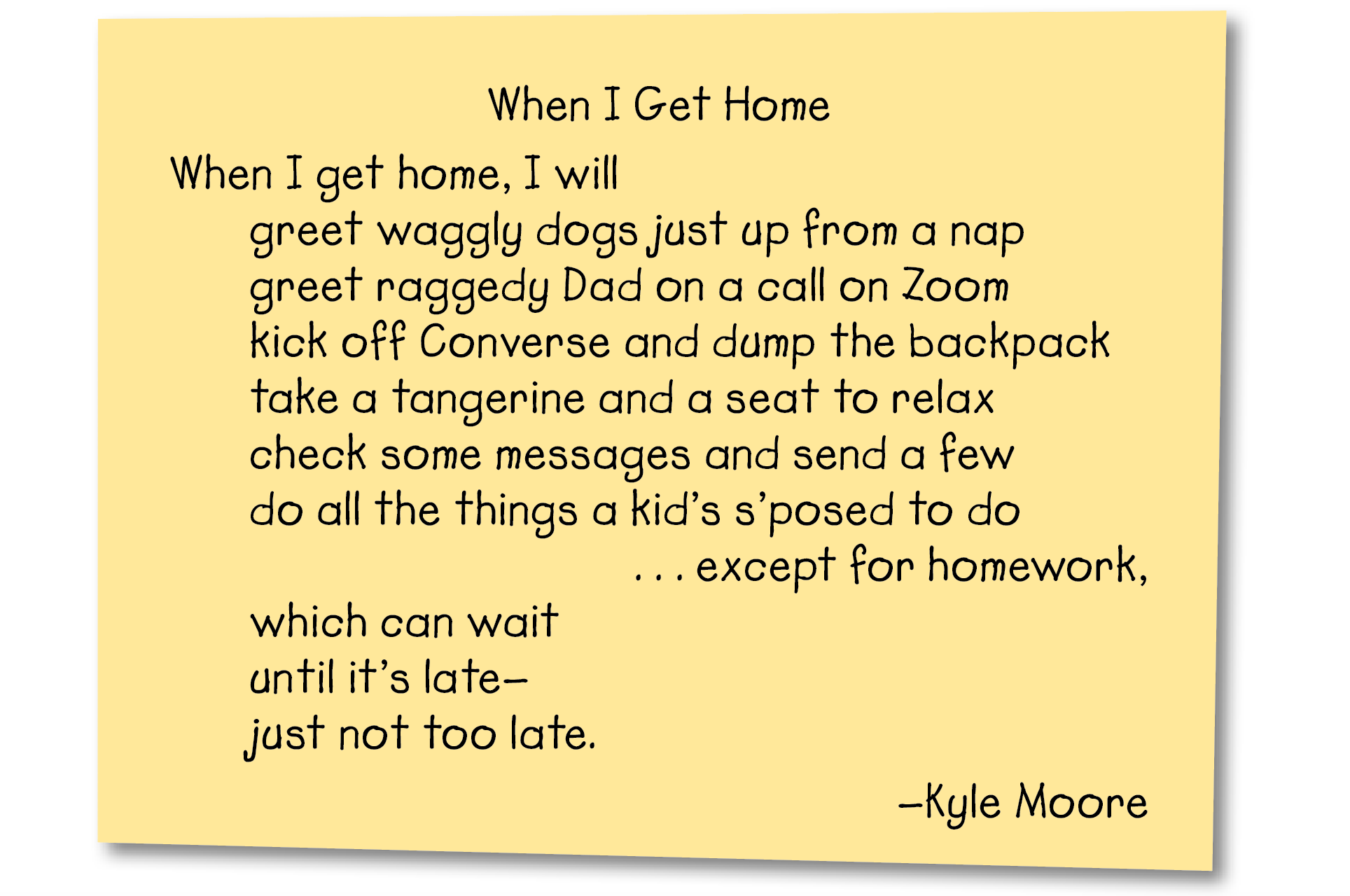WT 177
Page 177
Writing Free-Verse Poetry
Poetry is . . . birds laughing at feathery gossip, the po-ta-to-po-ta-to rumble of a passing Harley, the sweet whiff of rain beneath steely clouds. Poetry is . . . sunlight dappling dandelion grass, a crescent moon dragging its lazy finger across the silvery rim of a starry pool. Poetry is . . . strawberries on ice cream and steaks sizzling on the grill. It’s whatever you see and hear, taste and touch and smell. It’s every big feeling you have, and every little one, too.
The Poet in You
This chapter will unlock the poems inside you. You’ll also learn to enjoy the poems of friends. Soon, you’ll have plenty of poems dancing in your head!

WT 178
Page 178
Making Friends with a Poem
You make friends with a poem the same way that you make friends with a person. You listen to the poem and notice interesting things about it. You have a few laughs together. Try these four simple strategies:
🟪 Read the poem quietly to yourself.
🟪 Read it out loud. (Pay attention to sounds.)
🟪 Share the poem with a friend. (Talk about it.)
🟪 Write about the poem.
Use these strategies to make friends with the following poem, written by a student like you!

WT 179
Page 179
What Makes Poems So Special?
1. Poetry looks different.
Poems often take up little space and break lines in special places. The whole poem might even have an interesting shape, like this one:

2. Poetry says things in special ways.
Sam’s poem uses a simile that compares Mister P. to a pumpkin. Then the poem takes the shape of a pumpkin. Each line gets fatter, just like Sam’s roly-poly cat.
3. Poetry plays with sounds.
Read Sam’s poem out loud. Listen for the repeated sounds: lounges, around, ground, town, and please, cheese, agrees, he’s. Also notice how Sam invents a word—pumpkinest. These sounds make the poem fun to hear.
WT 180
Page 180
Learning About Free Verse
Some poems have strict rhythm and rhyme, but free-verse poems are more relaxed. They can rhyme but don’t have to, and they have a rhythm, but not a regular one. They use words in special ways and may even take a special shape. Free-verse poems find their own way.
On the last two pages, you read these free-verse poems: “Jumbo Steals Second” and “Mister P.” Now read this one, which is a list poem:

Tip
Kyle’s poem looks a lot like a list. After the first line, the next six each start with a verb. The word “except” breaks this pattern, followed by three short rhyming lines.
WT 181
Page 181
Writing a List Poem
Prewriting
Choose a Topic 🟪 Try a topic listed here, or think of your own idea:
🟪 ways to be a friend
🟪 fun things to do
🟪 what’s in my backpack
🟪 types of days
🟪 hopes for the future
🟪 reasons for a happy heart
🟪 fun things to do
🟪 what’s in my backpack
🟪 types of days
🟪 hopes for the future
🟪 reasons for a happy heart
Gather Ideas 🟪 In the middle of a piece of paper, write your topic and circle it. Cluster ideas around it. (See page 288 for a sample cluster.) If you need more help, try this activity.
Writing a Draft
List Your Ideas 🟪 Review your cluster and list your best ideas. Add new ideas that occur. Start your poem with a line that introduces the list, such as “In my backpack, you will find . . .”)
WT 182
Page 182
Revising
Review Your First Draft 🟪 Consider the ideas, structure, and voice.
🟪 Do you like what your poem says? If not, add some new ideas or rewrite some of your lines.
🟪 Do you like the way your poem looks? If not, try different line breaks and overall structure.
🟪 Do you like how your poem sounds? If not, try adding some rhyming words or words with repeating sounds.
🟪 Do you like the way your poem looks? If not, try different line breaks and overall structure.
🟪 Do you like how your poem sounds? If not, try adding some rhyming words or words with repeating sounds.
Editing & Proofreading
Correct Your Revised Poem 🟪 Fix any errors. Use punctuation and capital letters to make your poem clear. Check your spelling. Write a neat final copy.
WT 183
Page 183
Making Pleasing Sounds
Try these different strategies to make your poem fun to hear:
Rhyme 🟪 Choose perfect rhymes (like days and rays) as well as near rhymes (like dark and clock).
Some days are full of rays of sun.
But some are dark around the clock.
Repeating Sounds 🟪 Repeating words can add special sound to a poem:
My dog said his day was Ruff, ruff, ruff!”
My cat said, “Let meout, meout, meout!”
Repeating consonant sounds helps, too: 🟪
People put deep dreams on shallow paper.
Making Comparisons
Here are some of the special ways poets make comparisons in their poems:
A simile makes a comparison using like or as:
The day gleamed like a candy-bar wrapper.
A metaphor makes a comparison without using like or as:
The day was a peanut-caramel-chocolate surprise.
Personification makes a thing act like a person:
The day whispered all morning and laughed all afternoon.
